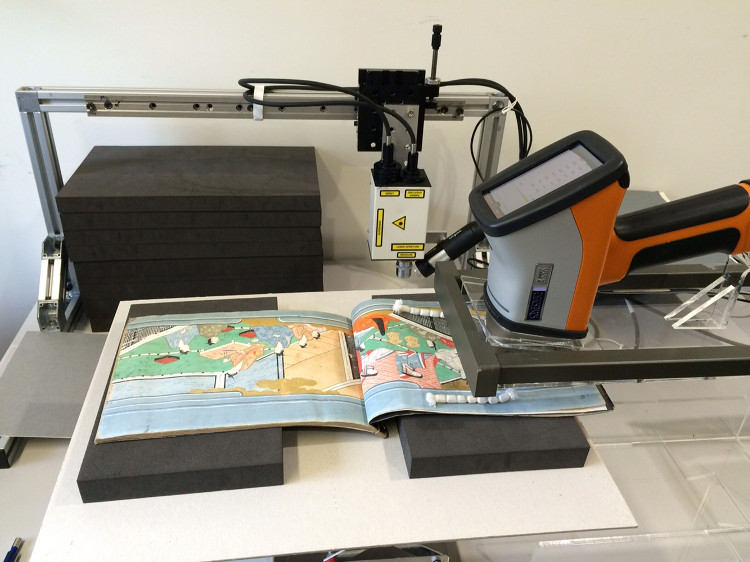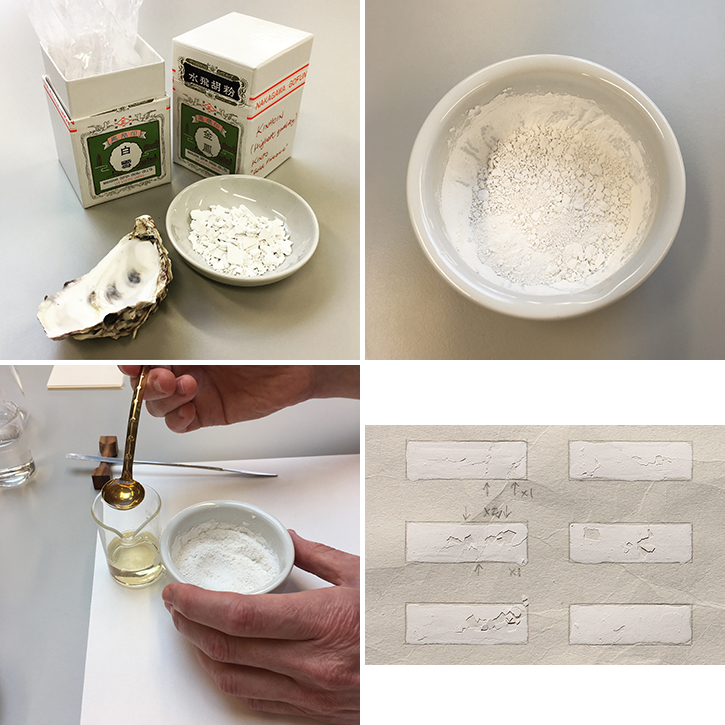Japanese picture books conservation project
Project dates
2017
Project summary
To conserve the manuscripts' fragile paint layers.
About the picture books
The term Nara ehon 奈良絵本 (Nara picture books) generally refers to a genre of lavishly-illustrated literature, hand-produced in book or scroll format in Japan from the 15–18th centuries, originating among priests in the Nara area.
The literature produced in Nara ehon form belongs predominantly to the Otogizōshi 御伽草子, the generic name for a collection of popular short stories, which were in circulation around the Muromachi period (1336–1573).
The Bodleian Libraries' Japanese manuscript collection contains fourteen examples of Nara ehon, among which of particular note are a collection of Otogizōshi, dating from the mid-Edo period (mid-17th century) (Bodleian Libraries, MS. Jap. d. 30-50). They contain nine, finely illustrated stories, decorated in ink, colour pigment, and gold on paper, with gold decorated indigo-blue Japanese paper covers and silver decorated endleaves.

Cover and opening from Kowata gitsune
Condition
The condition of the manuscript's fragile paint layers was of primary concern, in particular losses to areas of finely-ground Japanese gofun (oyster-shell white), which is very susceptible to flaking and powdering.
Losses to paint layers are associated with adhesive failure between the paint layer and paper support resulting in flaking, or cohesive breakdown within paint layers leading to powdering.
Gofun was applied in many successive layers by the artist, often with a high pigment to binding medium ratio in the upper paint layers to create a more brilliant and opaque white; the insufficient binding medium however contributed to its instability over time. As a binding medium deteriorates with age, losses occur in the weakened paint layers due to physical flexing of the paper support.

Details showing losses to areas of gofun and a red/gofun mixture
Conservation treatment
Adopting an approach of 'minimal intervention', the conservation treatment focused on stabilisation of paint layers which were in immediate danger of further loss. Flaking or powdery paint layers are stabilised with a consolidant, a material used to supplement a binder which is no longer functioning adequately.
The introduction of a consolidant has its dangers however, as when voids between pigment particles are filled the paint can darken in appearance. The type, amount, and distribution of the consolidant is therefore crucial, being strong enough to adequately bind the particles and adhere them to the support, but not cause significant changes to the refractive index and consequently the surface appearance of the paint layer.
Although 'gofun' is known to be the most commonly-used white pigment in Japanese painting, non-destructive analysis using X-Ray Fluorescence was used to confirm the white pigment as calcium-based, discounting other pigments such as lead white.

XRF analysis of areas of gofun
In order to test various consolidants, 'gofun' was prepared in a traditional way by grinding with a pestle and mortar, mixing with an animal glue (gelatine) binder, and painting out in thick layers replicating the manuscript's paint layers. These samples were used to observe the behaviour of the pigment, its tendency to flake, and its response to various consolidants.

Preparation of gofun
A number of consolidants were tested to find the most effective in stabilising the paint layers:
- Isinglass (an adhesive made from the swim bladder of the sturgeon fish);
- Gelatine (from animal bones and skin);
- Funori (a Japanese seaweed adhesive made from a polysaccharide extracted from the red alga Gloiopeltis furcata);
- and Bermocoll® (ethyl hydroxyethyl cellulose).
Although all proved effective, Jun Funori® (a purified extract from Funori) was selected for its strength in low concentrations, flexibility and minimal visual impact on the matte white surface appearance of the paint layer, backed up by positive results in artificial ageing tests in recently-published research.
Consolidants can be applied by brush or as a fine aerosol mist depending on how finely ground the pigment is, the porosity of the paint layer, and whether it is flaking or powdery. In the case of finely-ground 'gofun', even the powdery layers were not porous enough to allow a consolidant to penetrate sufficiently as a fine mist. As most damage observed was in the form of flaking, a fine sable brush could be used working under magnification, using a solvent (Industrial methylated spirits) with a second brush to 'settle' loose flakes and aid the flow of consolidant underneath the paint layer.

Jun Funori® applied by fine brush under a microscope
Within the first phase of this project, leaves displaying most significant losses and flaking were treated in 10 out of 21 volumes, ensuring that the manuscripts can be safely consulted in the future, without risk of further loss or damage. New folders and boxes were made to re-house the conserved volumes.

After treatment
Acknowledgements
The Bodleian Libraries gratefully acknowledge a generous grant received from the Sumitomo Foundation in support of this conservation treatment.


